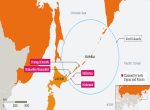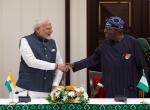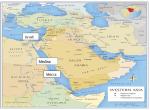The Annual Report of the Department of Defence colloquially known as Pentagon’s Report on China’s Military Power has been released. The Report is mandated by the US Congress and provides a bird’s eye view each year of developments in the People’s Liberation Army (PLA). An overview read in conjunction with the China’s White Paper on Defence 2010 highlights a significant trend, fast track modernization of the PLA. Rapid changes are evident across a swathe of transformational issues, conceptual underpinnings, allotment of resources and even in identity, it is no longer the vanilla term PLA commonly used for army, navy as well as the air force. Today we have the PLA Army (PLAA), PLA Navy (PLAN) and the PLA Air Force (PLAAF) with emphasis on jointness and network centricity, two buzzwords that the Chinese seem to have picked up from Iraq War 2003.
The Pentagon Report reflects an in depth analysis of Chinese White Paper which had sought modernisation from a higher platform, expanding strategic reach and conducting operations in “distant waters”. Mechanisation, Informationisation and Jointness are the key drivers aimed at creating joint operations systems. The investments made in defence hardware and technology has led to platforms and systems which are maturing and integration of these into the overall combat architecture is now moving apace. For the first time the Pentagon Report has included a chapter on China’s Evolving Maritime Strategy as a Special Topic indicating American concerns of Beijing’s rising naval ambitions.
The overall modernization of PLA continues under the operational rubric of Active Defence, not to be confused with a defensive strategy as this includes many offensive components such as punitive or self defence counter attack a euphemism frequently used for the 1962 war against India. There is however a subtle shift in increasing focus on power projection. This is evident in recent operational moves to deploy a small flotilla in the Northern Arabian Sea for anti piracy operations. The Pentagon believes that this capability will be enhanced by end of the decade.
In line with this trend emphasis of modernization is on the Second Artillery Corps with a wide range of ballistic and cruise missiles which will provide a shield for, “counter intervention”. With reference to India apart from a mention of the boundary dispute, the Pentagon Report has highlighted replacement of, “liquid-fueled, nuclear-capable CSS-2 IRBMs with more advanced and survivable solid-fueled CSS-5 MRBM systems.” The solid fuel missiles will provide considerable advantage in terms of transportation and redeployment as well.
While the other arm being rapidly upgraded is the PLA Navy. China deployed a frigate operating in the Gulf of Aden to rescue citizens when violence broke out in Libya even as other nations were mustering their resources for this purpose showing remarkable adaptability and willingness to employ military muscle to rescue its citizens. The PLA Navy has received maximum resources for modernization and over 65 percent submarines are capable of firing an anti-ship cruise missile. Apart from employment in the core area of interest in Taiwan straits and
deploying a sea based nuclear deterrent, the Report states that the maritime force will be used to assert claims in East and South China Sea, protect sea lanes in the Indian Ocean and power projection. All these surmises may raise considerable challenges for the Indian Armed Forces in the days ahead.
China’s investment in defence is steadily growing with a declared budget of $ 60 billion in 2008, $ 70.2 billion in 2009, $ 78.6 billion in 2010 and $ 91.5 billion in 2011. This would denote doubling of the defence budget in a cycle of five years. While this may not indicate corresponding improvement in capability, sizeable accretions will have to be factored in by Indian planners. Pentagon estimates on military related spending from Annual Reports in the corresponding period are between $ 105 Billion to 150 billion in 2008, over $ 150 billion in 2009 and over $ 160 billion in 2010. This is the second highest defence budget globally though it would be one sixth of the United States.
As the Xi Jiping era is due to unfold in Beijing, like other rising powers before it, China’s economic growth is leading to modernization of the military. China’s Defence Minister Liang Guanglie made no bones about it when he stated as quoted in the Pentagon Report, “In the next five years, our economy and society will develop faster, boosting comprehensive national power. The developments will provide an even more stable material base to our defense and military buildup.” The break out will be evident when China abandons the current strategy of reliance on asymmetry for dominance with focus on cyber and space dominance to joint high intensity conventional operations. The Report predicts this will happen only after 2020.
India may not have the resources, economic as well as management, just yet to catch up with China; the focus will therefore have to be on ensuring that the capability gap does not extend to make it attractive for Beijing to settle some of the contentious issues as border by use of force. At the same time transparent asymmetric deterrence in the Indian Ocean, in the Himalayas and in aerospace should provide a second line of assurance even as deft balancing with the United States, Japan and Russia will have to be used to keep Beijing in a strategic dilemma.
The newly formed Task Force under Mr Naresh Chandra could well take note of transformations in the PLA which when co-joined with, “all weather strategic partner,” Pakistan will pose a substantial joint two front challenge to the Indian military. Given that the mandate of the Task Force is to, “review existing processes, procedures and practices,” which are key weakness of the Indian system, the august body could focus on how budgetary resources allotted for defence, so often said to be available on demand can be converted into military capability which can deter the combined Sino Pak military challenge by 2020.
-----------------------------------------------
Published Date: 2nd September, 2011

 Rahul Bhonsle.jpg)








Post new comment